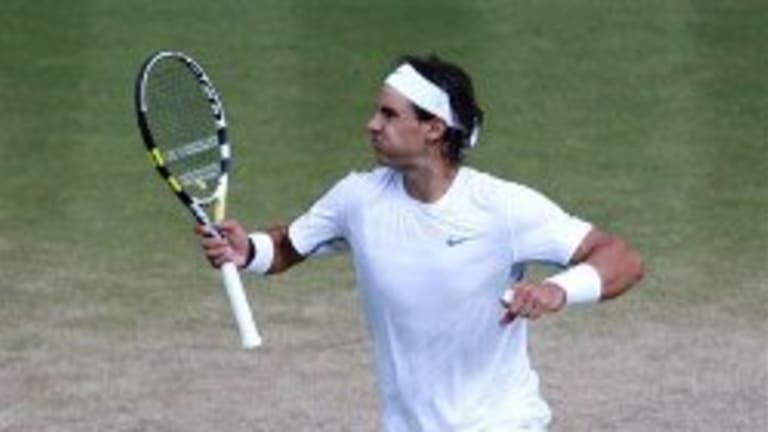It’s rare when you can say that a match hinges on one point. Having struck a rich vein of form to take the first set from Rafael Nadal despite suffering from a hip flexor injury sustained in his previous match, Andy Murray was pressing hard on the Spaniard’s serve at 1-2, 15-30 in the second set when calamity struck: a mid-court ball, a forehand ‘sitter’, and he hit it long. From that point on, the aggressive accuracy that had characterized the first set deserted the British No. 1 and Nadal struck back—relentlessly—to rout his opponent, 5-7, 6-2, 6-2, 6-4.
It’s rare when you can say a match hinges on one point, because it almost never does. To say so is a reductive disservice to both men and the mental resilience that is such a necessary component of being a champion. Nadal was already tightening up his game when Murray missed that fateful forehand. His trademark, never-say-die defense got one more ball in the air on break point in the next game, and Murray put a smash way past the baseline. It was the second in a run of seven consecutive games that the defending champion won while Murray struggled to put the ball in the court. By the time Murray regained some composure, he was already a break down in the third.
Still, the third and fourth sets were as much if not more about Nadal’s excellence than Murray’s deficiencies. It would have been easy for Nadal, assured of losing his No. 1 ranking minutes before walking on the court and a having lost a crucial first set, to struggle. But he did the simplest thing first and raised his own level, dragging his first-serve percentage up into the seventies and finding his range on the court. His unforced errors for the match stand at seven; even by Wimbledon’s notoriously generous standings, that’s a player who has his house in order. Next he set about breaking down his opponent’s game. Murray had lost his confidence on the forehand side, always his weaker wing, and Nadal punished it further by repeatedly playing heavy, off-pace, backhand slices to that side, which invariably drew errors. Murray hit more winners, some of them glorious and seemingly physics-defying, but if his tennis was showier it was also shoddier, as he missed an egregious amount of mid-court balls.
If there was a chance to get back into the match for Murray, it came with Nadal serving at 3-1 in the fourth. At 30-30 after a return winner, Murray netted another mid-court sitter; he still earned two break points, which Nadal erased with signature, brutal cross-court forehands, getting him into net or drawing errors. He was simply too good. The most Murray could do after that was hold serve and hope for a chance to break Nadal as he served for the match. He was playing the wrong opponent for that.
—Hannah Wilks
